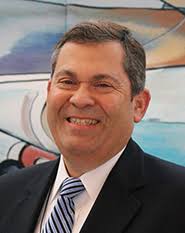
L. Jeffrey Lowenstein, DMD
AAOPAC, NESO Representative
The battle to straighten teeth has moved from the aligner stores and online displays to the desks of legislators throughout the country. “Direct to Consumer” aligner companies received a colossal blow with news out of California when an extension of the state assembly’s teledentistry Bill No. 1519 was passed by Governor Gavin Newsom. This legislation is set to give the Dental Board of California regulatory control through January of 2024 and allowing consumers who go the “do-it-yourself” to be able to file complaints with the board, despite agreeing to the manipulative terms of the “mail-ordered ortho” companies. As Governor Newsom noted in his signing statement, “The bill includes significant policy changes related to the regulation of self-applied orthodontic treatments administered via telehealth and other technological platforms.” Some of these changes include:
- Requiring an electronic notice for patients receiving dental services through telehealth including a provision that the California Dental Board is the entity that regulates dentists and dental assistants and provides the telephone number and internet website of the California Dental Board.
- Defining “[u]nprofessional conduct” to include a treating dentist’s failure, prior to the initial use of orthodontic appliances, to review the patient’s most recent radiographs or equivalent bone imaging.
- Requiring individuals and entities providing dental services through telehealth to make available the name, telephone number, practice address, and California state license number of any dentist who will be involved in providing services to a patient prior to the rendering of services and when requested by a patient.
It is through this regulatory action in California, and also in the states of Alabama and Georgia that has slowed down the avalanche of orthodontic treatment by “mystery” orthodontists/dentists via the “mail-order” pathway from digital plastics processing to consumer malfunction. The American Dental Association and the American Association of Orthodontists have also led the effort to educate the public with online presentations and resources to address complaints and concerns for patients that have had unfavorable experiences with unsupervised aligner services.It will be with continued efforts through the legislative process that the direct-to-consumer aligner movement will be controlled. It is important for you, as a member of the Northeastern Society of Orthodontists, to contact your state representative in the legislature and find out the teledentistry laws that have been passed and/or the teledentistry bills that are before them to be acted upon. If there are no teledentistry laws/bills than it is time to start drawing them up and you can look to California and the AAO Advocacy Team for assistance. Practicing orthodontists have had to abide by the rules of the states in which they practice, and now it is time for the “direct-to-consumer” aligner companies to do the same.
The views expressed in this article are those of the author and do not necessarily reflect the official policy or position of NESO.
